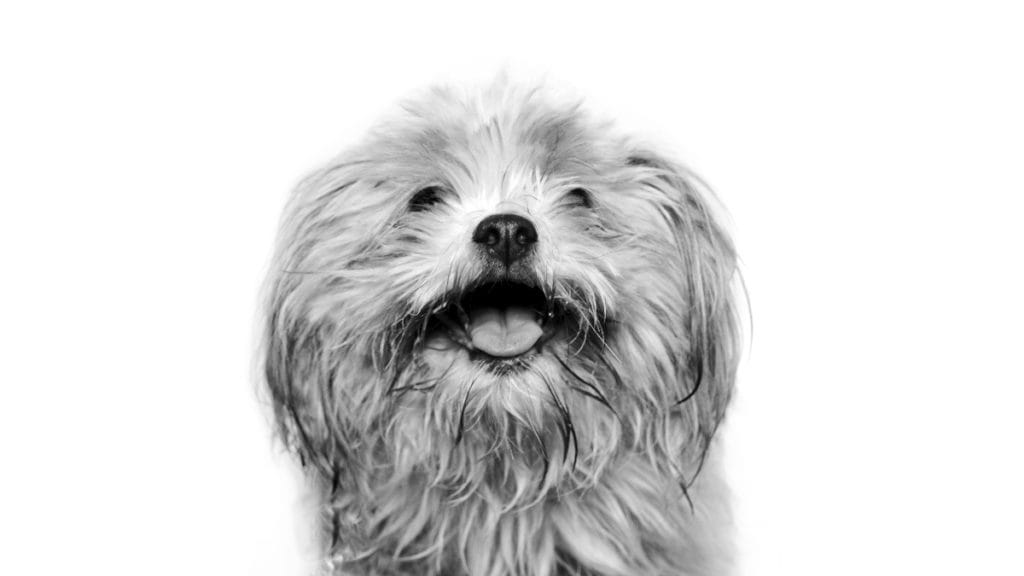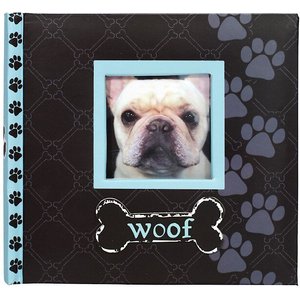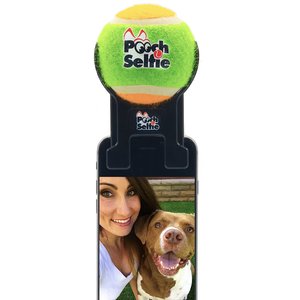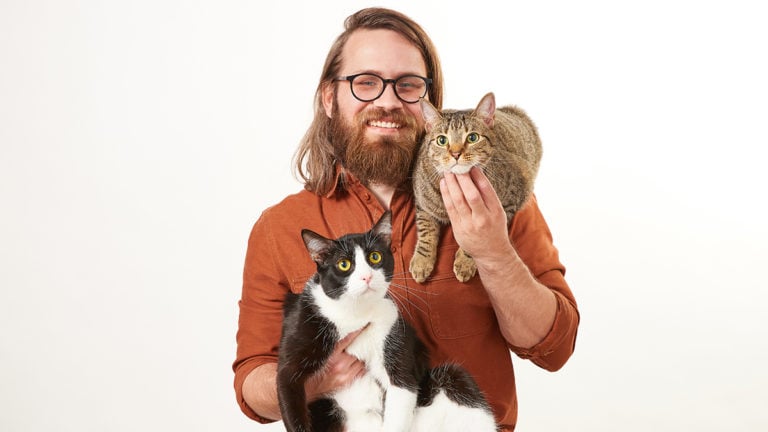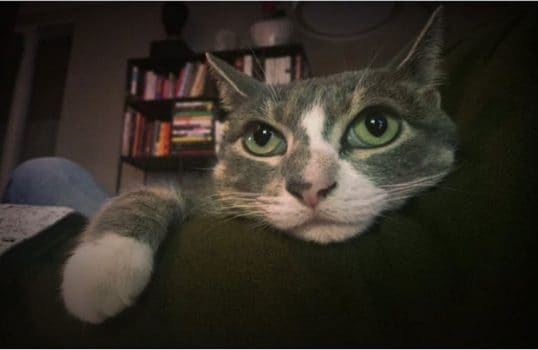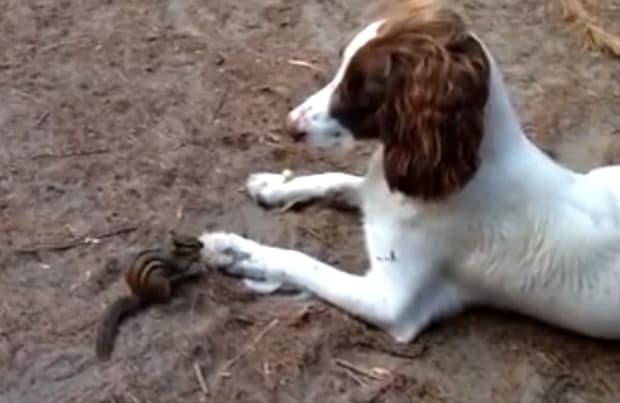The scene is perfect—a nice, sunny day in the park with your pup, who has her “bad to the bone” bandana on and is sitting with her tongue out, looking right at you with the sweetest grin. You rummage through your pocket, pull out the cell phone, and snap! You’re pretty pleased with your amateur pet photography skills until you actually look at the photo and realize your dog must have sneezed at that crucial second of perfect pet-picture-taking opportunity. Maybe your gallery is full of these would-be dog photos, taken just half a second too late. Or perhaps you finally got the shot, only to find out later that you can’t get the lighting right, no matter which filter you try. Should you just accept the fact that you will only ever take mediocre dog pictures? Don’t give up on your pet photography efforts just yet—we’ve consulted an expert for tips on how you can capture better pet pictures, even if you’re not a professional.

MARIO RESTREPO
Orlando, Florida native Mario Restrepo knows how much effort goes into taking dog photos. He’s a pet photography pro (although he also uses human subjects) who has a genuine love for pups and all the candid expressions and silly poses he captures. Here’s some advice on how you can get some decent-looking pet pictures of your own—equipped only with a cell phone and a prayer.
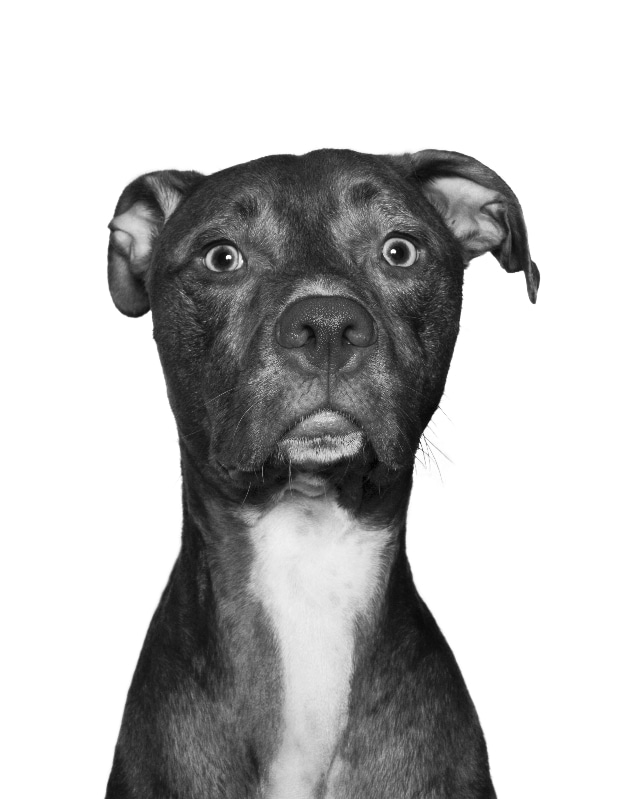
MARIO RESTREPO
Go Beyond Auto Capture
If you’ve never explored the settings on your cell phone camera, now’s the time. Just knowing about a handful of features could take your dog pictures from so-so to best in show.

MARIO RESTREPO
Portrait Mode: On newer iPhones (7 Plus), Portrait mode gives “the subject a shallow depth of field—in other words, focusing on the subject and blurring out the remaining noise in the background and foreground,” explains Restrepo. In your camera app, swipe over to Portrait mode, and when you see the yellow Depth Effect box on the screen, snap the pic. For Androids, swipe right to view different modes, and choose Selective Focus. These modes are great for taking dog photos that focus on the face and capture your pup’s quirky personality.
Burst Mode: If you are always clicking just before or after the perfect shot, try Burst Mode, but move the phone (steadily) along with your subject. This is good for taking action shots. Press and hold the shutter release, and follow your pooch as she moves. After a few seconds, release the shutter button. These will appear as a single photo with a number displaying the number of photos that were actually taken. Now the odds are slightly better that you’ve captured the right moment.
Auto Exposure/Auto Focus Lock: Once you have the right lighting and your subject is in sight, simply press and hold on the subject (your four-legged friend) until you see “AF/AE lock” (Android) or the yellow AE/AF Lock box appears (iPhones). Your camera will lock the focus on that area, with the proper exposure already set. Try setting your phone on a tripod, and use a stand-in object in the spot where you want to take pet pictures. Lock the focus on that object, and then lure your loyal subject into the frame to take the shot.
Gridlines: If you’ve had any exposure to photography at all, you’ve heard of the rule of thirds. It’s like putting an imaginary tic-tac-toe grid over the frame, separating the screen into nine squares. This technique gives you more balanced pet pictures. “The rule of thirds is definitely one to follow, and once you understand why it works, then you can play around with different viewpoints,” says Restrepo. “I’ve always aligned the subject in my work very symmetrically. For me the golden ratio is more important because symmetry is pleasing.” Since there’s no golden ratio setting, stick to the grid for now (unless you can visualize the spiral on your screen).
Pro Mode: To shoot like a pro (kind of), check out the Pro mode. This turns your phone’s camera into a DSLR-style camera so you can adjust the settings manually. You’ll be able to control ISO, shutter speed, aperture and white balance. Pro mode might be for pet parents that have a little bit of photography knowledge already, but you can still test your pet photography skills by playing around with the settings.
Tracking AF: Available in Android phones, Tracking Autofocus (AF) tracks moving subjects for sharper dog pictures. Open the camera app, click on the settings gear, and turn on Tracking AF by clicking on it. This only works in Pro or Auto mode. Put your sweet angel pup’s face in the center of the frame and tap on it. She’ll stay in focus, even if she’s moving around.
Explore Lighting Sources

MARIO RESTREPO
Most of us probably don’t think about lighting when taking pictures of dogs, other than noticing if there’s not enough or too much of it. Restrepo admits that lighting is a loaded question. If you’re not a lighting expert, the best thing is to improvise by playing around with different light sources, he says. “I’ve always been a big fan of natural light an altering it with skins or reflectors. It’s definitely something that stems from my childhood and running around the Florida landscape with its amazing sunshine. As for lighting position, you have to shine it in all different directions, and slowly but surely, one will start to see the patterns and drama created from different lighting positions.”
Pay Attention to the Background
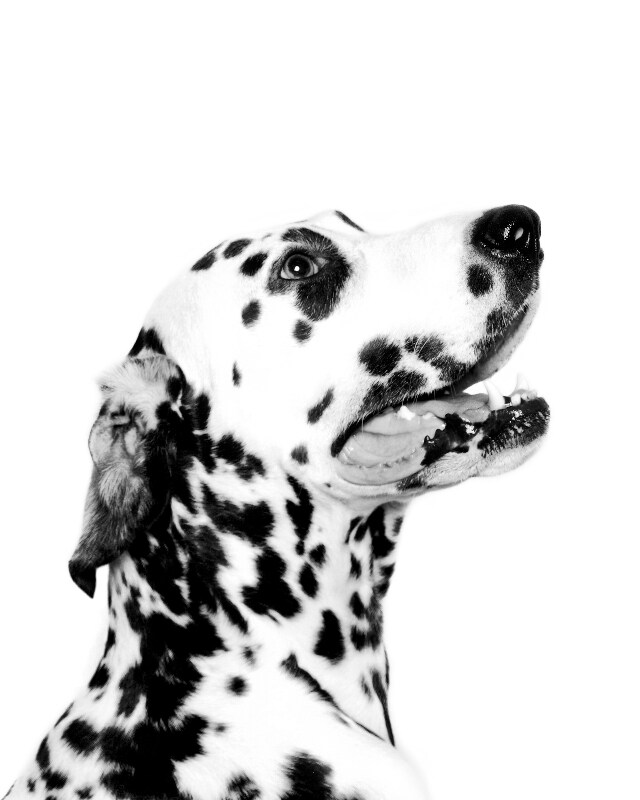
MARIO RESTREPO
In pet photography, you want the star of the pic to be your pooch, not the bright green garbage can behind her, or the neighbor’s dog that photobombed the shot. When you look at the photo, your eye should go right to your furry friend instead of struggling to find the subject. Having a plain wall in the background works well to make the subject really stand out, but you can also go to the other extreme, says Restrepo: “I generally use a crisp, solid background so the only point of interest is the subject; however, with that said, I’m all about extremes. I find that sometimes, super loud and busy prints make for whimsical backgrounds.” You can start with a simple, uncluttered background and then take some pics with a busy background to see which you prefer.
Don’t Give Up

MARIO RESTREPO
Anyone who has tried to take pictures of dogs knows the struggle of working with a constantly moving subject that’s easily distracted (unless you have a well-trained dog). “I think the most common mistake to be made is just giving up or losing your temper,” says Restrepo. “It’s all about patience. Giving up too easily because the pupper is happy and wiggly or losing your temper will never work.” Our pets pick up on our body language and mood, so getting upset can make them nervous and upset. Test out some of Restrepo’s tried and true tips: make strange noises to get a silly head tilt, or hold a dog toy to get their attention, and if nothing else works, toss some treats to show them it’s rewarding to get their picture taken. The Pooch Selfie attaches to the top of your cell phone and holds a bright neon tennis ball to hold your pup’s attention long enough to take some great dog pictures.
Enhance the Details
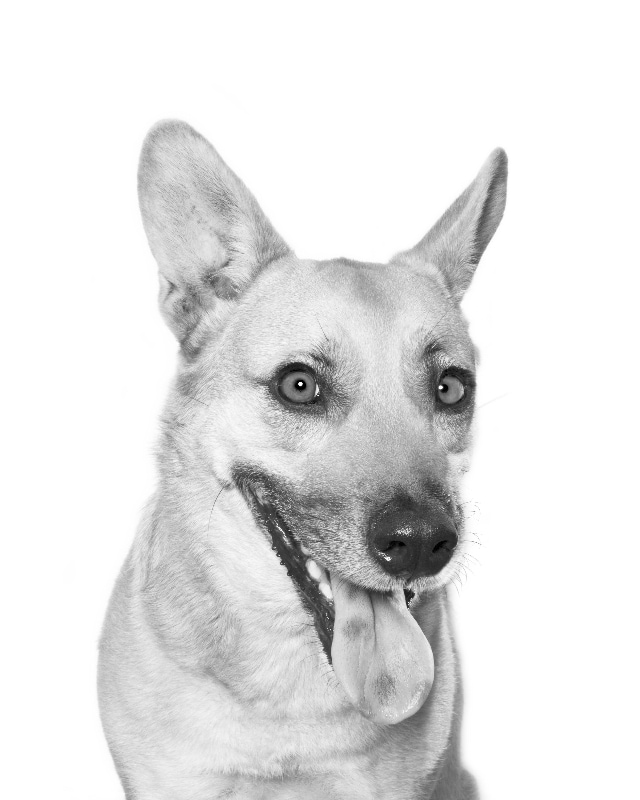
MARIO RESTREPO
Although you’ll never get the quality of a professional DSLR camera with your cell phone, Restrepo agrees that “the editing program on Instagram really provides a lot of editing options—almost like a mini Photoshop that can really help with enhancing details in a camera phone snap.” When you edit your pet pictures, you can fine-tune the details and add filters in Instagram. This can really help when you have an all-black or all-white pet and you want to make sure you can see the details of their face and body.
For a more in-depth guide, pick up Beautiful Beasties: A Creative Guide to Modern Pet Photography. And once you’ve captured your dog’s funny antics or serious side, you can proudly display the results in a nice photo album on your coffee table or cute wood frame by your bed.
“Probably the only worthy and best advice I could impart onto any pet parent attempting the skilled feat of capturing stellar photos of their beloved pets would be to have A LOT of patience,” says Restrepo. When it comes to capturing that perfect moment in time, he points to his love for dogs. “I love what I do, from meeting them and just rolling around on the floor playing to photographing them and editing the photos. It is always so rewarding and such a special moment for me to watch another pet lover receive their prints an instantly melt in love.” His Instagram account is full of amazing, candid portraits of pups—check it out for some inspiration for your own dog pictures.
Looking for more pet photo tips? Check out our interview with Christian Vieler, the man behind those viral pics of dogs catching treats.
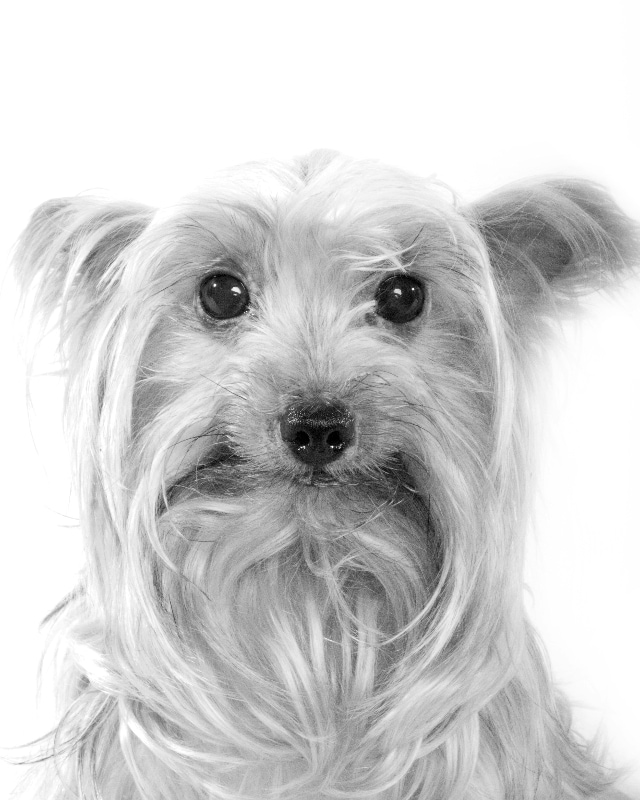
MARIO RESTREPO

MARIO RESTREPO
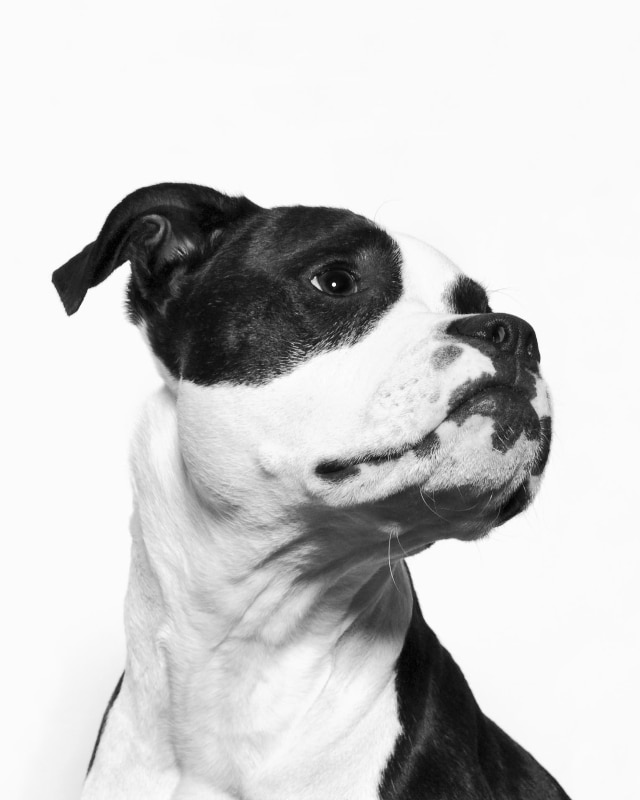
MARIO RESTREPO
About Mario Restrepo
Instagram @marioerestrepo
www.marioerestrepo.com
An Orlando, Florida native, I have a great fascination with the sun and an appreciation for natural lighting. The Florida landscape is sewn into the fabric of who I am; exploring the forest and crossing through creeks in my adolescence fostered my love for nature and animals. As a child, I could blink, imprinting precious moments onto my memory. I’ve now lived in New York for eight years, and while it is vastly different, the subjects continue to be the same. As an adult, I use cameras to immortalize those people, events, pets, places, spaces and structures. My eyes continue to be in perpetual sensory overload; however, my mind wanders and races with all the beauty, creativity and individuals that inhabit this new wilderness. I started dabbling in photography right before the digital era. This allowed me the chance to learn film cameras and how to fill a frame, making every photo count, because film rolls were never endless. As my interest in photography deepened, I took a deeper love for black and white photography. Developing my own B&W film and printing my own negatives in the darkroom further altered the way I saw things. By creating my own world through B&W images, I became enamored with the rich tonal values and drama delivered from these photographs. Most of my life has been spent as a watcher, studying the way humans and animals move and react towards one another. I get lost in the intricate details of one’s face and just how uniquely different yet similar everyone is. The goal of my photography is translating my vision by creating questions and ideas of how one might see themselves, challenging their own self-perception.

Nikki Naser, BeChewy Senior Editor
Instead of owning 30 cats, Nikki has an impressive collection of 30 cat-themed T-shirts, and just 4 pets—a ginger-haired senior cat, a senior Maine Coon, a middle-aged Choodle, and a young kitty who showed up one day on the back steps. A former Orlando resident, Nikki worked on several tourism publications before moving to South Beach. When she’s not stopping to take pics of community cats to post on Instagram, Nikki spends her time with the office pets at Chewy, writing for their BeChewy blog.
Share:
